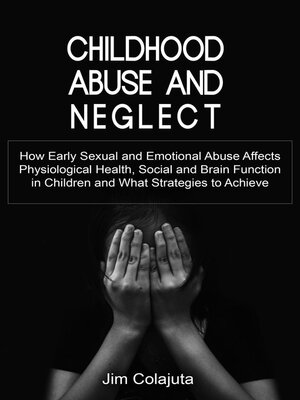Childhood Abuse and Neglect How Early Sexual and Emotional Abuse Affects Physiological Health, Social and Brain Function in Children and What Strategies to Achieve
ebook
By Jim Colajuta

Sign up to save your library
With an OverDrive account, you can save your favorite libraries for at-a-glance information about availability. Find out more about OverDrive accounts.
Find this title in Libby, the library reading app by OverDrive.



Search for a digital library with this title
Title found at these libraries:
| Library Name | Distance |
|---|---|
| Loading... |
It's difficult for most of us to envision somebody injuring a child. Child abuse and neglect are absolutely real, as unpleasant as they can be. In the United States, more than 600,000 children are abused or neglected each year. Physical and psychological integrity and protection from all types of violence are guaranteed to all persons under 18. Nonetheless, we know that children and adolescents are subjected to violence in the home, at school, in legal and child protection systems, at work, and in the community for various social and cultural reasons.
As a result, children and adolescents are harmed in areas and locations that are supposed to provide them with safety, affection, developmental stimulation, refuge, and advocacy for their rights. One of the factors that makes them particularly vulnerable is their lack of autonomy as a result of their young age, as well as the high levels of emotional, economic, and social dependency they have on adults or institutions, making it difficult for them to stop the abuse, seek help, or report the situation.
We pay for children's exposure to violence in various ways, including physical and mental health care, child welfare, special education, juvenile and criminal justice, and productivity losses throughout their lives.







